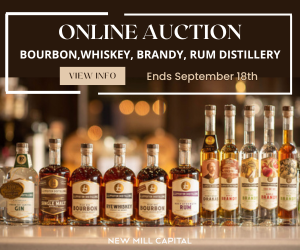Why Selling Whisky to Women Isn’t as Simple as Putting a Picture of One on the Bottle
A few weeks ago, I participated in a once novel, now canonical ritual of the drinks industry: a virtual tasting. The whisky in question was the latest release of Jane Walker, a blended Scotch from drinks behemoth Diageo. Diageo introduced the Jane Walker brand a few years ago with a limited-edition release of their standard Johnnie Walker Black Label, only instead of a man, the label showed a fictitious woman—Jane—striding across the front of the bottle in top hat and riding gear.
It was immediately greeted with a round of scathing feedback calling the launch a pandering instance of “pink washing”—the whisky equivalent of putting a pink handle on the same razors that have been scraping the faces of grandpas since time immemorial, then demanding kudos. It didn’t help that Diageo PR reps touted the release as a way to make whisky “less intimidating” to women—news to the many millions of women comprising about a third of the Scotch whiskey market in the United States.
Yet the odd thing about Jane Walker is that it actually does have a real, live woman behind it—Emma Walker, a Ph.D. chemist who’s also responsible for the most upscale Johnnie Walker bottlings, including Blue Label and the Ghost & Rare series. The shared last name is a happy coincidence; she has no relation to Johnnie or Jane.
Her latest Jane Walker is a much better whisky than the first—a rich, chocolatey blend created to highlight the Cardhu distillery and its famous women founders, complete with a 10-year age statement. Diageo has also been careful to reframe their messaging around this latest release, casting Jane Walker not as “whisky for women,” but “whisky for those who support women,” or “whisky inspired by pioneering women.”
But I’m still not sure how successful that messaging is out in the real world. During the tasting, one of the very first questions came from a man who chimed in to ask Emma how she went about designing a “whisky for women.” She very tactfully said she wouldn’t know where to begin with such a brief—and if she were offered the job, she’d likely decline. But from a marketing perspective, I think there’s something dishonest about pretending a brand that’s so clearly a feminine counterpart to Johnnie Walker, right down to the sleek boots and riding crop, doesn’t openly invite the comparison. It also begs the question: Is Johnnie Walker actually intended for men? Have I, a woman who’s been drinking Johnnie Walker for years, been doing it wrong?
Perhaps even more interesting is men’s response to Jane Walker. When I brought my bottle out at a backyard tasting with a friend, he immediately reached for it and asked, “What’s this, Johnnie Walker for women?” It was a vivid reminder of the tenacious idea that maleness is the baseline, and while it’s now more or less fine for women to use many historically male items (i.e. pants), men still shy away from products that seem too explicitly feminine (wives and girlfriends’ expensive skincare products excepted, of course).
I sometimes have mixed feelings about the importance of this particular flavor of gender representation in whisky. There’s something fundamentally regressive about the idea that the whisky brands we choose to drink should somehow match our gender. Having more fictitious women festooning various luxury consumer products does not, in my book, count as particularly radical. Creating companies and economies with robust career paths for people of all genders and races, generous compensation, good policies for people with caretaking responsibilities, and diverse leadership hits much closer to the mark (ironically this seems to be something Diageo is fairly good at).
At the same time, we’re in a moment where there’s an imperative for companies to demonstrate how they are engaged in creating a more equitable world in a substantive way, and I suppose branding is one highly visible way to do that. But if I were tasked with developing a Diageo whisky with a woman on the front, I’d want to create something that highlights a real person who isn’t literally following in the footsteps of the famous Johnnie, but exists on her own terms. Diageo has plenty of those—past and current—and one of them even made this whisky.










